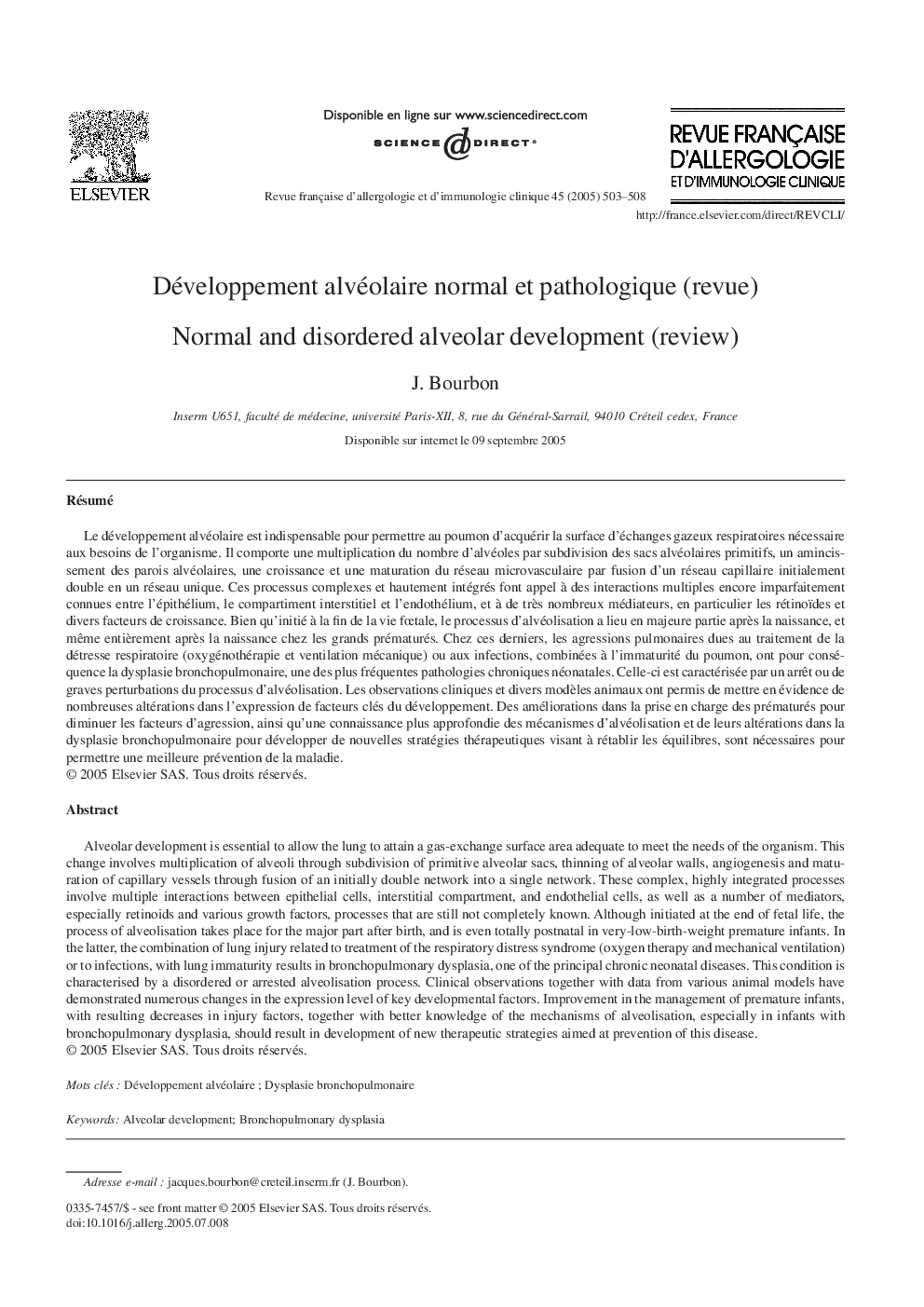| Article ID | Journal | Published Year | Pages | File Type |
|---|---|---|---|---|
| 9100158 | Revue Française d'Allergologie et d'Immunologie Clinique | 2005 | 6 Pages |
Abstract
Alveolar development is essential to allow the lung to attain a gas-exchange surface area adequate to meet the needs of the organism. This change involves multiplication of alveoli through subdivision of primitive alveolar sacs, thinning of alveolar walls, angiogenesis and maturation of capillary vessels through fusion of an initially double network into a single network. These complex, highly integrated processes involve multiple interactions between epithelial cells, interstitial compartment, and endothelial cells, as well as a number of mediators, especially retinoids and various growth factors, processes that are still not completely known. Although initiated at the end of fetal life, the process of alveolisation takes place for the major part after birth, and is even totally postnatal in very-low-birth-weight premature infants. In the latter, the combination of lung injury related to treatment of the respiratory distress syndrome (oxygen therapy and mechanical ventilation) or to infections, with lung immaturity results in bronchopulmonary dysplasia, one of the principal chronic neonatal diseases. This condition is characterised by a disordered or arrested alveolisation process. Clinical observations together with data from various animal models have demonstrated numerous changes in the expression level of key developmental factors. Improvement in the management of premature infants, with resulting decreases in injury factors, together with better knowledge of the mechanisms of alveolisation, especially in infants with bronchopulmonary dysplasia, should result in development of new therapeutic strategies aimed at prevention of this disease.
Related Topics
Health Sciences
Medicine and Dentistry
Anesthesiology and Pain Medicine
Authors
J. Bourbon,
